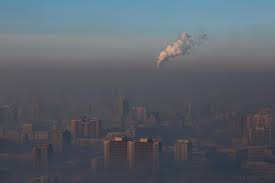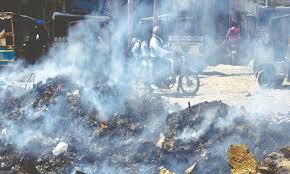Air pollution has become one of the most pressing environmental challenges facing humanity today. It affects the health of millions of people, contributes to climate change, and harms ecosystems across the globe. In this article, we explore some of the world’s most polluted cities, where air quality levels have reached hazardous levels, and discuss the causes, impacts, and solutions to this critical issue.
1. Delhi, India

Delhi, the capital city of India, has consistently ranked among the most polluted cities in the world. A combination of rapid urbanization, industrial emissions, vehicle exhaust, and seasonal factors like crop burning in nearby states contributes to extremely high levels of air pollution. During the winter months, the city experiences a significant spike in particulate matter (PM2.5), which can reach levels more than 20 times higher than the World Health Organization’s (WHO) recommended limits.
The air quality in Delhi can lead to a range of severe health problems, including respiratory diseases, cardiovascular problems, and even premature death. The government has taken steps such as introducing odd-even schemes for cars, promoting electric vehicles, and enhancing green cover, but the problem persists.
2. Lahore, Pakistan

Lahore, Pakistan’s second-largest city, suffers from high levels of air pollution due to industrial activities, vehicle emissions, and agricultural practices like crop burning. Lahore frequently experiences smog, especially during the winter months when temperature inversions trap pollutants in the atmosphere.
PM2.5 concentrations in Lahore often exceed the safe limits set by international health organizations, leading to significant public health concerns. According to reports, Lahore’s air pollution contributes to respiratory and cardiovascular diseases, making it one of the most hazardous places to live in terms of air quality.
3. Dhaka, Bangladesh

The capital of Bangladesh, Dhaka, is another city grappling with severe air pollution. Rapid industrialization, an increase in the number of vehicles, and brick kilns contribute to the city’s polluted air. Additionally, burning of solid waste, dust from construction activities, and the high levels of particulate matter in the air are major contributors to the city’s air quality crisis.
The population density and the limited green spaces in Dhaka further exacerbate the issue. The residents often experience high levels of air-borne pollutants, leading to an increase in respiratory diseases and other health problems, especially among children and the elderly.
4. Ulaanbaatar, Mongolia

Ulaanbaatar, the capital of Mongolia, has one of the worst air quality records in the world, especially during the winter. The city’s residents heavily rely on coal for heating, and the intense use of coal stoves during the harsh winter months contributes to a significant rise in air pollution. The smoke from these stoves, combined with emissions from vehicles and industry, causes PM2.5 levels to soar.
In Ulaanbaatar, air pollution levels often surpass the safe limits by many times, leading to widespread health issues, including respiratory infections and other chronic diseases. The government has started to address the issue by promoting cleaner energy alternatives, but the challenge remains significant.
5. Beijing, China

Beijing, the capital of China, has struggled with air pollution for decades, though there have been notable improvements in recent years. The city’s pollution is mainly due to vehicle emissions, industrial activities, coal burning, and dust from construction sites. During the winter months, the burning of coal for heating purposes worsens air quality, often causing a severe smog crisis.
The Chinese government has taken drastic measures to combat pollution, such as imposing stricter emissions standards, promoting electric vehicles, and relocating heavy industries away from urban centers. Despite these efforts, Beijing still faces occasional pollution peaks, especially during the colder months.
6. Karachi, Pakistan

Karachi, Pakistan’s largest city and commercial hub, suffers from high levels of air pollution. Rapid urbanization, increasing traffic, and the unregulated growth of industries have made the city one of the most polluted in South Asia. In addition to vehicle emissions, dust storms, and the burning of solid waste, Karachi’s industrial sector also contributes to the pollution crisis.
Health statistics indicate that Karachi’s residents are at an increased risk of suffering from respiratory issues, heart diseases, and other health problems due to the harmful pollutants in the air.
7. Cairo, Egypt

Cairo, the capital of Egypt, has long been one of the most polluted cities in the Middle East. The city’s air pollution is primarily caused by emissions from vehicles, industrial factories, and the burning of crop residues. The dense traffic, coupled with dust storms that frequently sweep across the region, contributes to a choking layer of pollutants in the air.
As a result, air pollution in Cairo poses a major health risk, with respiratory illnesses and heart conditions on the rise. The city has made some efforts to address the issue, such as implementing stricter traffic regulations and promoting cleaner technologies, but air quality continues to be a major concern.
8. Jakarta, Indonesia

Jakarta, the capital of Indonesia, faces significant air quality challenges due to the combination of rapid industrialization, heavy traffic congestion, and the burning of fossil fuels. The city experiences severe air pollution during the dry season, exacerbated by a lack of green spaces and proper waste management systems.
The government has taken steps to reduce pollution levels by promoting electric vehicles and improving public transportation. However, air quality remains a serious issue that affects millions of people’s health.
9. Mexico City, Mexico

Mexico City, one of the largest urban centers in the world, has historically struggled with air pollution. The city’s geographic location in a valley surrounded by mountains traps pollutants, creating smog that affects air quality year-round. Vehicle emissions, industrial activities, and the burning of fossil fuels contribute significantly to the city’s pollution levels.
The government has implemented programs such as “Hoy No Circula” (a program that restricts vehicle use based on license plate numbers), the promotion of cleaner fuels, and the expansion of public transportation. While pollution levels have decreased in recent years, Mexico City remains a city with chronic air quality issues.
Solutions and the Path Forward
While the situation in these cities is dire, progress is being made in some regions to reduce pollution levels and improve air quality. Governments and local authorities have implemented policies such as stricter emissions standards for vehicles and factories, investments in cleaner energy, and enhanced public transportation networks. However, addressing air pollution requires a concerted effort at the global, national, and local levels.
Key actions for improving air quality include:
- Promoting the use of clean energy: Transitioning to renewable sources like solar, wind, and hydropower can reduce the dependence on coal and fossil fuels, which are major contributors to air pollution.
- Encouraging sustainable transportation: Expanding public transportation, promoting electric vehicles, and creating pedestrian-friendly cities can help reduce emissions from the transport sector.
- Improving waste management: Proper waste management systems can reduce the burning of waste, which is a major source of air pollution in many cities.
- Increasing green spaces: Expanding parks and green areas can help absorb pollutants and improve air quality in urban environments.
Conclusion
The most polluted cities in the world face a combination of industrialization, urbanization, and insufficient environmental policies. Air pollution poses a significant risk to public health, and addressing the problem will require strong policy actions, innovation, and cooperation across borders. While efforts are being made to reduce pollution in some of these cities, much work remains to ensure that air quality improves and that future generations can breathe cleaner, healthier air.




